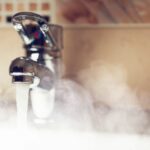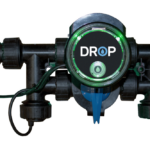Poor water pressure can be terribly unproductive, be it bad showers or low tap water to wash dishes.
After a long day at work, no one wants to be under a shower that barely throws any water. It makes for poor hygiene and often puts you in a bad mood.
Poor water pressure may be something you think you’ve gotten used to, but proper water pressure is critical for your quality of life, both comfort and hygiene.
Here are the top ways to check your water pressure and get your water on the mend.


If they are experiencing a low water pressure as well then it’s a collective problem.
Contact the municipal water systems officer and inform them about the issue or file a complaint. Once they take care of the issue on their end, you should be having free-flowing water in no time.

Oftentimes the well pump goes without servicing and loses its charm.
Some pumps just aren’t suitable for a certain kind of well, such as centrifugal pumps don’t go well with deep wells, and thus can result in low water pressure.
Low water pressure as a result of well pumps is why we offer a warranty water pump for homeowners.

The situation can be particularly worse if you have hard water. It’s obvious you can’t clean all the pipes internally, but you can clean the ends.
The joinings of taps and showers. Or simply replace sections of pipe you think is causing a problem. If the situation is worse, it’s always advised to call a plumber near you in Maryland.

A quick inspection will tell you whether the valve is completely opened or not. Yes, all this while it might just be the partially closed valve causing the mess. If it is, you know what to do.
DROP Water Management also identifies open or leaking valves, sending alerts right to your phone to help you manage the water flow and get water pressure back.
In many cases, the cause of reduced water pressure is a simple leak, or a collection of small leaks. A visual inspection might be considered enough to locate the leaks but that’s not enough.
To best locate all the leaks you need a professional Water Company to take a look at your plumbing system. Professional Maryland Water Companies like National Water Service can also provide plumbers in the case of major leaks.
When you return from a trip or a weekend getaway, do not use the water immediately. Especially if it’s for drinking or cooking. For those purposes run the cold water taps for a minute or two and later proceed.
Normally other household water usage activities such as laundry or flushing toilets keeps the water moving, but after a gap, it’s advised to flush the pipes with cold water.
Hot water tends to dissolve contaminants which may lead to health problems over a prolonged duration.
Neither is the water heater safe nor are the pipes the water travels through, especially metal. Therefore, use cold water for drinking and cooking purposes.
Old household plumbing is the primary source of lead in drinking water. If you decide to replace, replace the plumbing with lead-free and galvanized pipes.
After installation make sure to flush the pipes regularly for at least a few days to get clean water.
If you have a water heating system that’s not limited to your bathroom, it’s a good idea to clean them about twice a year.
Hot water can loosen the contaminants on the surface of pipes which the cold water can later carry providing impure water.
It doesn’t take much, simply replace the cartilages regularly or whenever it’s suggested for your water filter.
That’s because a lot of bacteria is present in used cartilages and some metal residual also accommodates resulting in adulterated water.
You don’t even need a professional for this task, the manual provided with the filter should be enough to run you through the process.
A whole-house filter is installed on the main water supply to purify water entering all the pipes.
This simple installation makes the water you drink, use for cooking, or any other purposes effectively pure. Do note, however, that the installation needs to be done by a professional.
In the market, there are various tests available that measure the quality of water. TDS, or pH measurement for example can give an indication of how toxic your water is.
A constant inspection helps you detect any abnormalities and in doing so you can ensure clean and pure water.
Consuming impure water can give rise to many health issues. It’s important to keep a track of purity of the water at your home. We hope this article helped you restore your water pressure and get more pure water. Be safe.
National Water Service has been providing residential & small commercial water treatment, plumbing & well pump services for over 45 years. We specialize in water treatment, filtration & purification solutions as well as general plumbing to ensure clean, safe water for our customers in Maryland, DC & Northern Virginia.
Mon - Thurs
7:00am - 5:00pm
Friday
7:00am - 4:00pm
Sat - Sun
Emergency Service Available
National Water Servicing Corporation — 2025 All Right Reserved ™